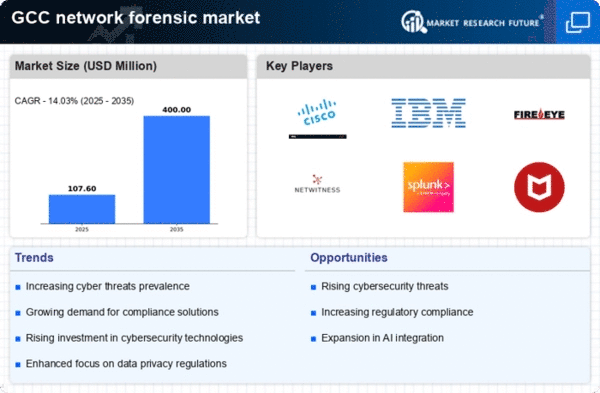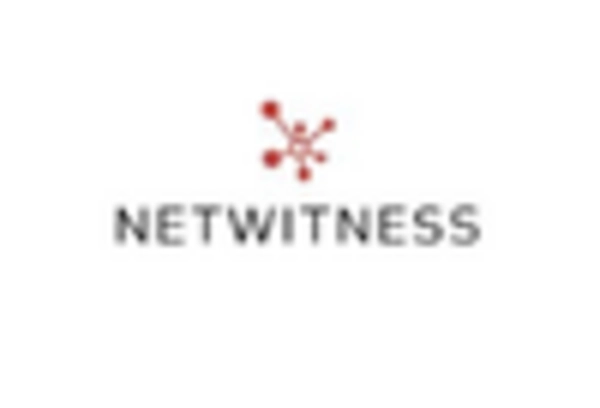Rising Cyber Threats
The network forensic market is experiencing growth due to the increasing frequency and sophistication of cyber threats in the GCC region. Organizations are investing in advanced forensic tools to detect, analyze, and respond to security incidents. According to recent data, cybercrime costs in the GCC are projected to reach $25 billion by 2025, highlighting the urgent need for effective network forensic solutions. This trend indicates that businesses are prioritizing investments in cybersecurity measures, including network forensics, to safeguard sensitive data and maintain operational integrity. As cyber threats evolve, the demand for specialized forensic tools that can provide real-time analysis and incident response capabilities is likely to rise, further driving the network forensic market in the region.
Increased Digital Transformation
The ongoing digital transformation across various sectors in the GCC is significantly impacting the network forensic market. As organizations adopt cloud computing, IoT, and other digital technologies, the complexity of network environments increases, leading to a higher demand for forensic solutions. The market is expected to grow at a CAGR of 12% from 2025 to 2030, driven by the need for enhanced security measures. Companies are recognizing that traditional security measures may not suffice in the face of evolving threats, prompting them to invest in network forensics to ensure comprehensive monitoring and analysis of their digital assets. This shift towards digitalization necessitates robust forensic capabilities to mitigate risks associated with new technologies.
Growing Awareness of Data Privacy
The heightened awareness of data privacy among consumers and businesses is influencing the network forensic market. In the GCC, there is a growing emphasis on protecting personal and sensitive information, which has led organizations to adopt more rigorous security measures. The implementation of data privacy laws is prompting companies to invest in network forensics to ensure compliance and protect against data breaches. As organizations seek to build trust with their customers, the demand for forensic solutions that can provide insights into data handling practices is likely to increase. This trend suggests that the network forensic market will continue to expand as businesses prioritize data privacy and security.
Regulatory Frameworks and Compliance
The network forensic market is being propelled by stringent regulatory frameworks and compliance requirements in the GCC. Governments are implementing laws that mandate organizations to adopt specific cybersecurity measures, including the use of forensic tools for incident investigation and reporting. For instance, the introduction of data protection regulations has led to a surge in demand for network forensic solutions that can assist in compliance efforts. Organizations are increasingly aware that non-compliance can result in hefty fines and reputational damage, thus driving investments in forensic technologies. This regulatory landscape is likely to continue influencing the network forensic market, as businesses strive to align their security practices with legal obligations.
Emergence of Advanced Forensic Technologies
The network forensic market is witnessing a surge in the adoption of advanced forensic technologies. These include artificial intelligence and machine learning. These technologies enhance the capabilities of forensic tools, enabling faster and more accurate analysis of network traffic and incidents. In the GCC, organizations are increasingly leveraging these innovations to improve their incident response times and overall security posture. The integration of AI-driven solutions is expected to drive market growth, as businesses seek to stay ahead of cyber threats. This trend indicates a shift towards more proactive and intelligent forensic approaches, which could redefine the landscape of the network forensic market in the region.

















Leave a Comment